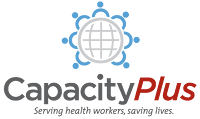Reviewer Bio: Barbara Stilwell

Barbara Stilwell has over 20 years of experience in HRH and has worked for Liverpool Associates for Tropical Health, UK, since September 2006. She is currently seconded to The Capacity Project in Chapel Hill, North Carolina. From 1998 - 2006, Barbara worked at WHO, Geneva, in health systems development, with a particular focus on workforce strengthening. She was one of the principal authors of the World Health Report 2006. Barbara coordinated a team working in the areas of performance improvement and education and managed a programme to collect and analyze data about the movement of health workers, and the impact of migration on health systems in developing countries. Barbara and the team have published extensively on this subject.
Barbara Stilwell holds a recent master's degree in development management, postgraduate research degrees and a first degree in social psychology, all obtained in the UK. She is also a nurse practitioner, educated in the UK and USA, and has practised with isolated populations in Africa, Australia and the Caribbean. It is from her clinical work in remote areas and with underserved populations in both the US and UK that her interest in capacity development arose.
Before going to WHO, Barbara Stilwell was head of department in a UK academic and policy unit specializing in developing practice among health professionals. In this capacity she was responsible for introducing large-scale changes within the British national health service.
Reviews:
View resource:
Role of Networking in Managing Migration of Human Resources for Health in the Philippines
Review date:6/9/2008
General comments
This is a descriptive study of the organizational effectiveness of the new Human Resources for Health (HRH) Network in the Philippines that has been established to oversee and coordinate HRH development. It is a subjective analysis, although the writer uses a set of variables and performance indicators, against which to measure organizational effectiveness. The paper is not easy to read as it contains a lot of densely packed information with many acronyms. If the reader is unfamiliar with the Philippine systems it interrupts the flow of reading and understanding to have to sort out what they mean.
Nevertheless, it is an interesting account of one country’s attempts to coordinate and control the health labor market at a high level of decision making. Indeed, in the Philippines there are many agencies involved in HRH – perhaps more than average – so that this initiative would be easier to implement in other countries. High level coordination of HRH policies and planning is certainly an example of good practice in the area of HRH development.




